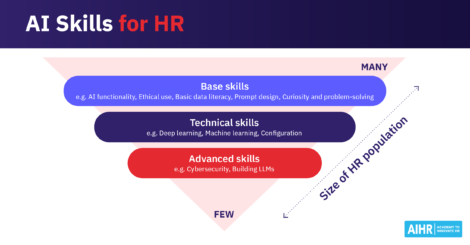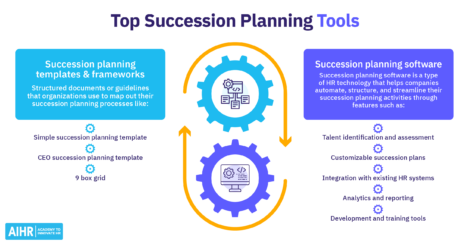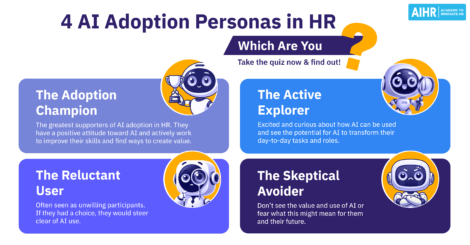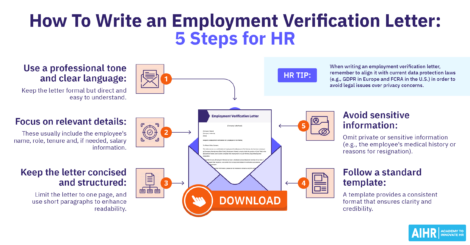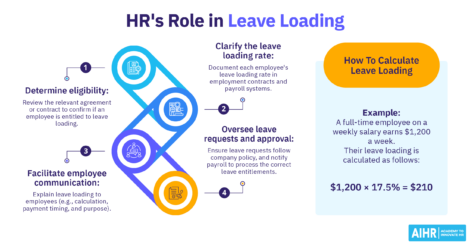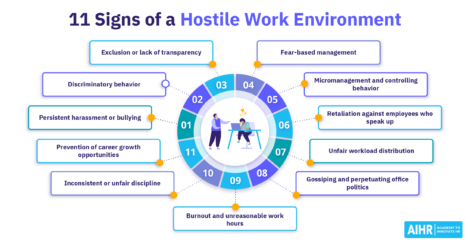What Is HR Technology? Benefits, Examples and Implementation in 2025
HR technology continues to impact the workplace, with 41% of companies planning to increase HR tech spending. From AI-driven hiring to automated payroll, the right tools can boost HR and business efficiency.
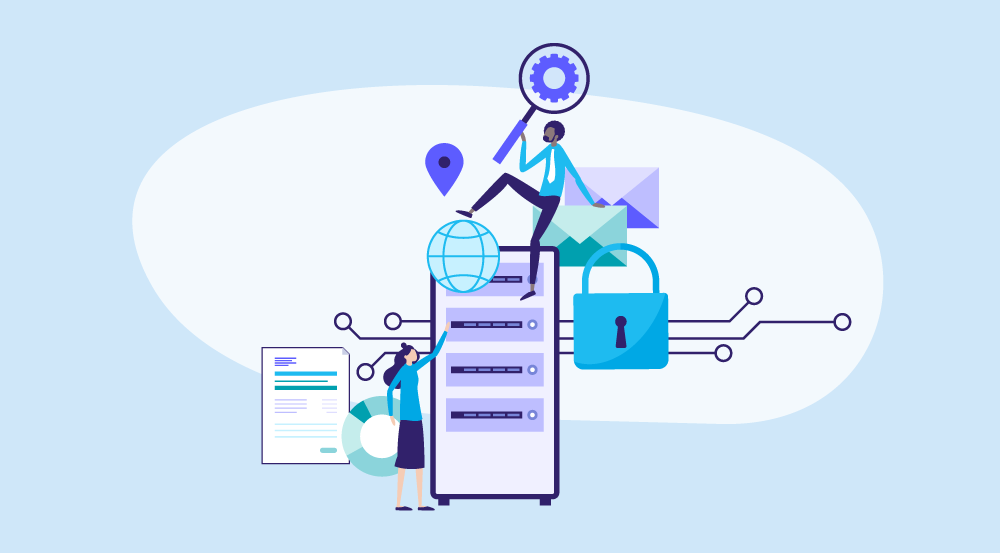
HR technology has been advancing since the 1950s, starting with the first computerized systems to assist with payroll. In the late 1980s, the first HRMS (HR management system) was introduced, followed by the LMS (learning management system) and job boards in the 1990s. It was only in the 2010s that HR saw the rise of people analytics.
Today, it’s all about AI-powered tools, which have opened up a new window of possibility, from improving employee experience to optimizing HR efficiencies.
There’s no doubt that there are many benefits to Human Resources technology. This article will highlight some of these and provide insights into how to use it to develop an HR tech strategy and effectively use HR technology across the HR function.
Let’s begin!
Contents
What is HR technology?
The role of technology in Human Resource Management
Key benefits of HR technology
Examples of HR technology across the employee life cycle
7 steps to implement HR technology
Best practices for successfully using HR technology
What is HR technology?
The term ‘HR technology’ refers to the software, hardware, tools, platforms, and applications designed to help organizations optimize their key HR functions. These solutions help HR automate processes, improve decision-making, and support employers and employees.
Technology in HR can include cloud-based platforms, AI, and data analytics tools that support workforce planning, employee engagement, and compliance. Through the strategic use of HR technologies, companies can reduce administrative tasks, improve employee experience, and align HR strategies with business goals.
The role of technology in Human Resource Management
Technology has transformed Human Resource Management (HRM) by making HR processes more efficient, data-driven, and employee-centric.
Human Resources technology plays a role in modern HRM in several ways. One is through automation, which reduces administrative burdens in payroll, benefits management, and recruitment. This provides HR teams with more time to focus on strategic tasks.
HR tech also enhances employee experience through self-service portals, chatbots, and engagement platforms that give employees easy access to HR services and resources. At the same time, AI and HR analytics tools enable Human Resources to make informed decisions through insights into workforce trends, employee performance, and engagement levels.
When it comes to legal compliance, organizations can use HR tech to help better adhere to labor laws and data protection regulations by automating compliance tracking and reporting. This leaves less room for human error or oversight that might otherwise result in non-compliance and potential legal risk.
Also, HR tech can help HR streamline workforce management and talent acquisition. For instance, cloud-based HR tech solutions can facilitate seamless communication, collaboration, and performance tracking for remote or hybrid teams. HR can also use AI-driven recruitment tools to attract, assess, and onboard top talent more efficiently.
Key benefits of HR technology
HR technology provides several advantages that can help HR teams operate more efficiently. Key benefits include:
- Increased efficiency: Automates repetitive HR tasks like payroll processing, benefits administration, and candidate screening, freeing time for strategic initiatives.
- Improved decision-making: Uses data analytics and AI-driven insights to help HR leaders make informed workforce decisions.
- Enhanced employee experience: Provides user-friendly tools so that employees can access HR services, manage benefits, and engage with the company.
- Better compliance and security: Ensures adherence to labor laws and data privacy regulations through built-in compliance features.
- Stronger talent management: Supports hiring, performance management, and employee development through integrated HR technology solutions.
Learn how to leverage HR technology for the organization
Develop the skills you need to use HR tech to its maximum potential at your company. By mastering these skills, you’ll be able to integrate HR tech to help you better meet the business goals and improve the employee experience.
AIHR’s Digital HR 2.0 Certificate Program will teach you to successfully integrate technology into your workplace, automate routine HR tasks to boost efficiency, analyze HR data for insights, and manage digital change within your organizations
Examples of HR technology across the employee life cycle
Here are some instances of HR tech solutions at work across the employee life cycle, along with a few examples of solution providers:
Example 1: Recruitment
Recruitment platforms can optimize the hiring process. You can use these platforms to post job ads, source candidates, schedule interviews, and screen applicants. This helps you quickly identify qualified candidates, reduce manual effort, and enhance collaboration among hiring teams, leading to faster, more efficient hiring decisions.
Sample of solution providers
Example 2: Onboarding
Onboarding technology enables companies to structure and automate their employee onboarding process, making it more efficient and engaging. Onboarding software can simplify employee onboarding by automating tasks and organizing documents. It reduces errors, ensures compliance, and helps new hires get up to speed quickly.
Sample of solution providers
Example 3: Performance management
Performance management tools allow companies to track individual, team, and organizational productivity, enabling HR and managers to provide their teams with the appropriate support. These tools can help improve workforce productivity by tracking employee goals, providing real-time feedback, and automating performance reviews.
They also offer insights into individual and team performance and skills gaps and support data-driven decisions, enabling you to foster growth and align employee efforts with organizational objectives.
Sample of solution providers
Example 4: Compensation and benefits
Payroll systems can help you save time and reduce errors by automating payroll calculations, tax deductions, and compliance with labor laws. They minimize the administrative burden by ensuring punctual salary payments, allowing HR teams to focus on strategic tasks.
They also provide centralized access to employee financial records, streamline reporting, and integrate with other HR tools like time tracking and benefits management. This improves efficiency, enhances data accuracy, and supports better decision-making.
Sample of solution providers
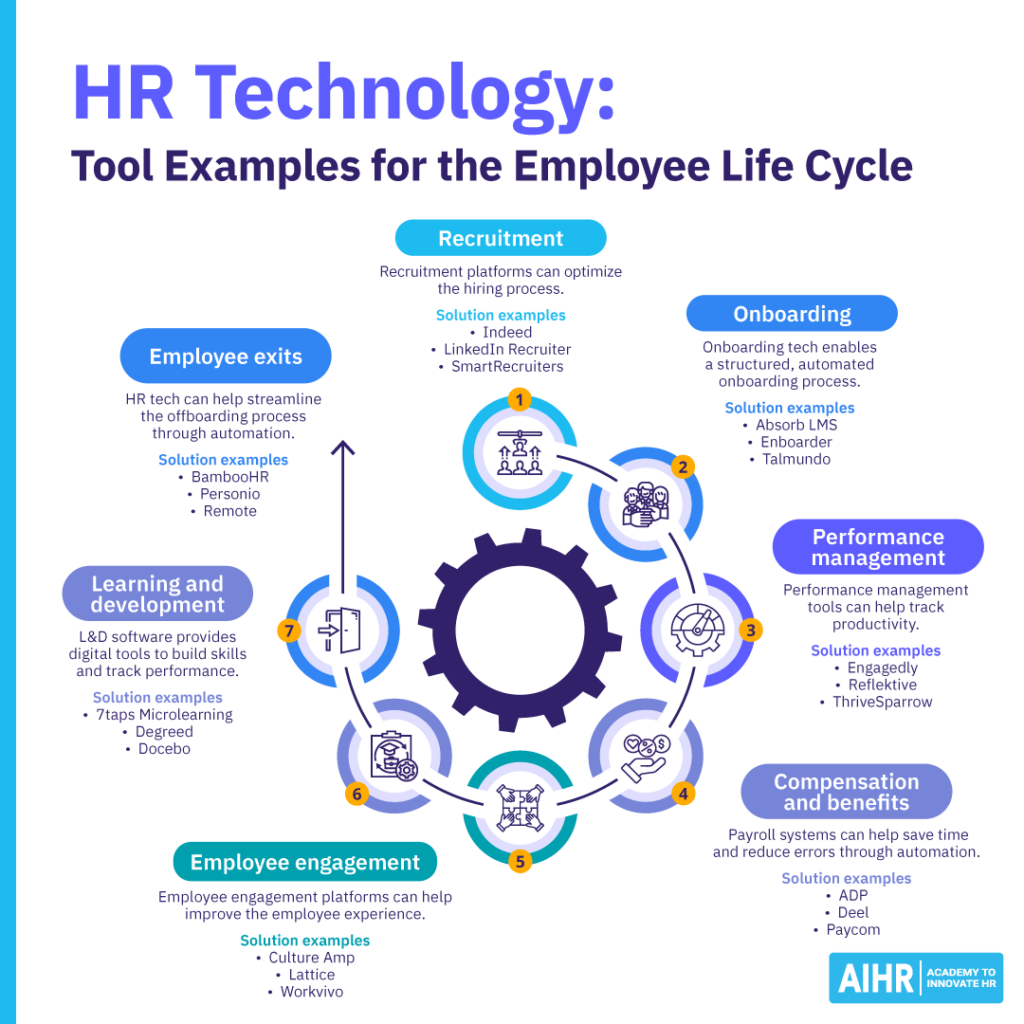
Example 5: Employee engagement
Employee engagement platforms help improve the employee experience by facilitating better employee communication, gathering feedback, and recognizing achievements. These tools enable you to monitor employee sentiment through surveys and polls, identify issues early, and implement targeted initiatives to increase satisfaction and retention.
Also, these platforms foster a sense of community through features like social feeds, collaboration tools, and peer recognition programs. By creating a more connected and supportive work environment, you can enhance morale, boost productivity, and align employee efforts with organizational goals.
Solution providers
Example 6: Learning and development (L&D)
L&D software supports employee training by providing digital tools to build skills, share knowledge, and track performance. It offers personalized learning paths, on-demand courses, and interactive content to engage employees while ensuring compliance with industry standards.
These platforms integrate with HR systems to monitor progress, assess competencies, and identify skills gaps, enabling data-driven decision-making. By making training accessible and scalable, L&D software boosts employee growth, productivity, and retention, aligning workforce capabilities with business goals.
Solution providers
Example 7: Employee exits
HR tech can help streamline the offboarding process by automating administrative tasks and providing a smoother transition for the employer and employee. These tools manage exit documentation, revoke system access, and handle final payroll processing efficiently.
They also support knowledge transfer through structured handovers and exit interviews, capturing valuable feedback to improve future offboarding experiences. By standardizing processes and reducing manual work, HR tech minimizes risks, maintains security, protects employer branding, and fosters alumni engagement.
Solution providers
How to use AI in HR
You can use AI in HR within recruitment, employee engagement, and performance management, to name a few. For instance, AI can help to streamline candidate screening by analyzing résumés, matching skills to job requirements, and even conducting initial interviews using chatbots.
Artificial Intelligence for HR can reduce time spent on repetitive tasks, improve decision-making with data-driven insights, and enhance the employee experience through personalized solutions. By automating routine work and offering predictive analytics, AI can allow you to focus on strategic initiatives that drive organizational growth.
7 steps to implement HR technology
To successfully implement Human Resources technology in your organization, consider following these steps:
Step 1: Assess your HR needs
The first step is to thoroughly assess your existing HR processes to identify pain points, inefficiencies, and bottlenecks that hinder HR operations. Gather feedback from the rest of your HR team, managers, and employees to understand their challenges and requirements. This ensures your HR tech investment aligns with company needs.
Step 2: Set clear objectives
Clearly define what you want to achieve with HR technology (e.g., automating payroll processing, improving recruitment efficiency, enhancing employee engagement, or ensuring compliance). Establishing well-defined objectives will help you select the right technology and measure its success once implemented.
Step 3: Choose the right technology
Research and evaluate different HR tech solutions. Consider cost, scalability, ease of use, integration capabilities, and vendor reputation. Also, compare software options, request demos, and check user reviews before deciding. The right technology should cater to company needs and be flexible enough to accommodate future growth.
Step 4: Secure stakeholder buy-in
Getting support from key stakeholders (including leadership, HR teams, and employees) is crucial for successfully implementing HR tech. Present a clear business case highlighting the chosen technology’s benefits. Address potential concerns and demonstrate how the new system will improve HR processes without disrupting daily operations.
Step 5: Integrate with existing systems
Make sure the HR technology you choose can seamlessly integrate with your existing HR software and business systems. This will help you avoid data silos and ensure smooth workflow transitions. Work with IT teams and vendors to facilitate integration, minimize disruptions, and maintain data security throughout the process.
Step 6: Train HR teams and employees
Successful HR technology adoption depends on how well employees and HR teams understand and use it. Provide comprehensive training sessions, user guides, and resources to familiarize everyone with the new system. Also, encourage hands-on practice and address any questions or concerns to build confidence in effective HR tech use.
Step 7: Monitor and optimize
Once you’ve implemented HR tech, continuously track its performance to evaluate whether it is still meeting your objectives. Collect feedback from users, analyze key performance metrics, and identify areas for improvement. Regularly update and enhance the system to optimize processes and maximize the value of your HR tech investment.
To fully harness the benefits of HR technology, you need a well-defined architecture and clear roadmap. Too often, HR professionals fail to optimize technology, leaving us stuck in MVP mode — never fully maturing or realizing its intended value. To break this cycle, start with a clear overarching goal, develop a structured step-by-step roadmap, and ensure you have the right blend of HR and tech expertise to guide you.

Best practices for successfully using HR technology
Here’s how you can use different types of technology in HR effectively:
Start with an HR technology strategy
An HR technology strategy aligns HR processes and goals with HR tech solutions to improve efficiency, support organizational objectives, and drive innovation. Creating this strategy should be your starting point. We’ve written a guide to help you develop your HR technology strategy, which you can refer to before you begin.
Prioritize training
Once you’ve established your HR tech strategy and started executing it, offer comprehensive training and support to everyone using the technology to help them become comfortable and proficient. This applies to both your HR team members and employees outside of HR.
Consider partnering with an HR tech consultant
There are many HR tech solutions to choose from, making it impossible to stay up-to-date with everything happening in the field. So, when designing your organization’s HR tech strategy, you may want to consider calling in an expert consultant. This person can support you in aligning HR tech solutions and tools with organizational goals.
To sum up
HR technology will continue to change to make workplaces more efficient and employee-focused. AI, predictive analytics, and blockchain will streamline hiring, engagement, and data security. As hybrid work has become the norm, cloud-based tools will help manage remote and in-office teams seamlessly.
This presents both an opportunity and a challenge for HR. It’s important to remain abreast of the changes but also to carefully evaluate the ethical use of HR technology. Take the time to understand how you can implement HR technology in your organization and consider what skills you need as an HR professional to successfully use it within your own HR function.
Learn more
Related articles
Are you ready for the future of HR?
Learn modern and relevant HR skills, online







